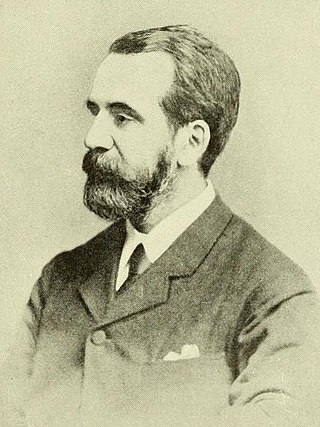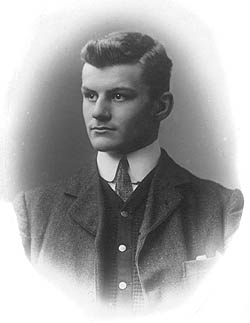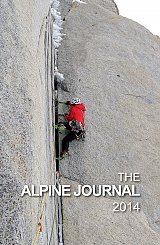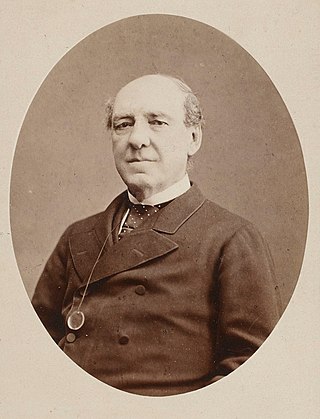
Kangchenjunga, also spelled Kanchenjunga, Kanchanjanghā and Khangchendzonga, is the third-highest mountain in the world. Its summit lies at 8,586 m (28,169 ft) in a section of the Himalayas, the Kangchenjunga Himal, which is bounded in the west by the Tamur River, in the north by the Lhonak River and Jongsang La, and in the east by the Teesta River. It lies in the border region between Koshi Province of Nepal and Sikkim state of India, with the two peaks West and Kangbachen in Nepal's Taplejung District and the other three peaks Main, Central and South directly on the border.

Allan Octavian Hume, CB ICS was a British political reformer, ornithologist, civil servant and botanist who worked in British India and founded the party Indian National Congress. He supported the idea of self-governance by Indians. A notable ornithologist, Hume has been called "the Father of Indian Ornithology" and, by those who found him dogmatic, "the Pope of Indian Ornithology".

Shimla is the capital and the largest city of the northern Indian state of Himachal Pradesh. In 1864, Shimla was declared the summer capital of British India. After independence, the city became the capital of East Punjab and was later made the capital city of Himachal Pradesh. It is the principal commercial, cultural and educational centre of the state.

Sir George King was a Scottish-born British botanist who was appointed superintendent of the Royal Botanic Garden, Calcutta in 1871, and became the first director of the Botanical Survey of India from 1890. He was recognised for his work in the cultivation of cinchona and for setting up a system for the inexpensive distribution of the anti-malarial quinine throughout India through the postal system.

The Archaeological Survey of India (ASI) is an Indian government agency that is responsible for archaeological research and the conservation and preservation of cultural historical monuments in the country. It was founded in 1861 by Alexander Cunningham during the British Raj who also became its first Director-General.

Chharabra is a small village situated approximately 8250 feet above sea level, 13 km from Shimla, India, on National Highway 22.

Darashaw Nosherwan Wadia FRS was a pioneering geologist in India and among the first Indian scientists to work in the Geological Survey of India. He is remembered for his work on the stratigraphy of the Himalayas. He helped establish geological studies and investigations in India, specifically at the Institute of Himalayan Geology, which was renamed in 1976 after him as the Wadia Institute of Himalayan Geology. His textbook on the Geology of India, first published in 1919, continues to be in use.

Tirsuli is a Himalayan mountain peak in the Chamoli district of Uttarakhand, India. It is part of the complex of mountains, including Tirsuli West, Hardeol, Dunagiri, Changabang, and Kalanka, which make up the northeast wall of the Nanda Devi Sanctuary, in the Garhwal Himalaya. It rises at the northern end of the Johar Valley, which drains into the Ghori Ganga. This peak should not be confused with nearby Trisul, which is on the southwest side of the Sanctuary.
Tom George Longstaff was an English medical doctor, explorer and mountaineer, most famous for being the first person to climb a summit of over 7,000 metres in elevation, Trisul, in the India/Pakistan Himalayas in 1907. He also made important explorations and climbs in Tibet, Nepal, the Karakoram, Spitsbergen, Greenland, and Baffin Island. He was a founding member of The Alpine Ski Club in 1908 and the Himalayan Club (1929), was elected as an Honorary Member of the Climbers Club in 1932 and was its President from 1933–1935 and was president of the (British) Alpine Club from 1947 to 1949.

Lieut-Colonel Kenneth Mason MC was a British soldier and explorer notable as the first statutory professor of Geography at the University of Oxford. His work surveying the Himalayas was rewarded in 1927 with a Royal Geographical Society Founder's Medal, the citation reading for his connection between the surveys of India and Russian Turkestan, and his leadership of the Shaksgam Expedition.
The Alpine Club was founded in London on 22 December 1857 and is the world's first mountaineering club. The primary focus of the club is to support mountaineers who climb in the Alps and the Greater Ranges of the world's mountains.

The Zoological Survey of India (ZSI), founded on 1 July 1916 by the Ministry of Environment, Forest and Climate Change of the Government of India as a premier Indian organisation in zoological research and studies to promote the survey, exploration and research of the fauna in the country.
John Bicknell Auden was an English geologist and explorer, older brother of the poet W. H. Auden, who worked for many years in India with the Geological Survey of India and later with the Food and Agriculture Organization. He studied the Himalayan strata, particularly the Krol Belt where he recognized rocks from the Peninsula thrusting north into the Himalayas. He also studied groundwater and was involved in studying the geology of many dam sites in India. Auden's Col is named after him.

The Alpine Journal (AJ) is an annual publication by the Alpine Club of London. It is the oldest mountaineering journal in the world.
The Mount Everest Committee was a body formed by the Alpine Club and the Royal Geographical Society to co-ordinate and finance the 1921 British Mount Everest reconnaissance expedition to Mount Everest and all subsequent British expeditions to climb the mountain until 1947. It was then renamed the Joint Himalayan Committee; this latter committee organised and financed the successful first ascent of Mount Everest in 1953.

Bourne & Shepherd was an Indian photographic studio and one of the oldest established photographic businesses in the world. Established in 1863, at its peak, it was the most successful commercial firm in 19th-and early 20th-century India, with agencies all over India, and outlets in London and Paris, and also ran a mail order service. A devastating fire in 1991 destroyed much of the studio's photographic archive and resulted in a severe financial loss to the firm. The long-term impact of the fire, legal difficulties with the Indian government, which owned the studio building, and the increasing dominance of digital technology, finally forced the studio's closure in June 2016. At its closure, the studio had operated continuously for 176 years.
Sir Geoffrey Latham Corbett KBE CIE was a British member of the Indian Civil Service and a mountaineer. He held senior positions in the Governments of British India and the Kingdom of Egypt.

Sir Henry Edward Landor Thuillier was Surveyor General of India. Under his direction, 796,928 square miles of India were surveyed, including difficult mountainous, forest, and desert regions, often for the first time. He was responsible for the printing in 1854 of the first postage stamps valid throughout India. Thuillier was elected a fellow of the Royal Society in 1869, made a CSI in May 1870, and knighted in June 1879.
Chetan Singh is an academic historian from Himachal Pradesh, India. He is noted for his work on the history of early modern and modern western Himalayas.













